It’s a New Month
Happy January! Hopefully, in between holiday clean up, and taking stock of the year from the rear view mirror, you’re also swinging a telescope forward to anticipate the future heft of art supplies in your hands, right?
There are work surfaces to clear, and pigments to sort, and sketch pads to flip through while reflecting on the creative goals imagined for the year ahead of us, yes?
I’m twirling with relief at the thought of getting back to work. I crave the comfort in the familiar rhythm of Routine. Let’s get into it.
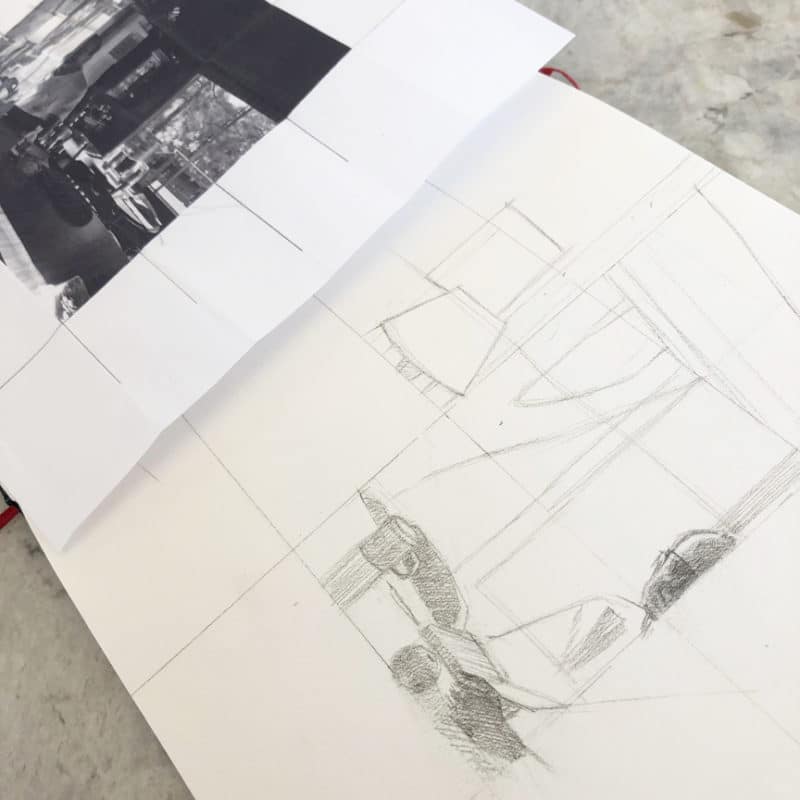
Using a Grid to Lay in a Drawing
I’m still using my simplified version of the grid method to lay out sketches and drawings based on black and white printouts of reference photos. Have you tried this approach yet? I know it won’t work for everyone, but goodness, it teaches so much about measuring the relationships between shapes.
Years ago, I attended a workshop with the amazing Susan Lyon. She explained portrait drawing likeness as a matter of relationship-practice: how much space is there between the tear duct of the eye to the bridge of the nose? And from the bridge of the nose, where does the brow begin? Each shape on the face is a relative distance to another shape.
You will get better and better at pinning down those distances with repetition, and that’s exactly what you’re doing when drawing shapes inside a cube on your grid drawings. Which quadrant of the cube does this circle occupy? How close to the lower corner does this angled line pass through?
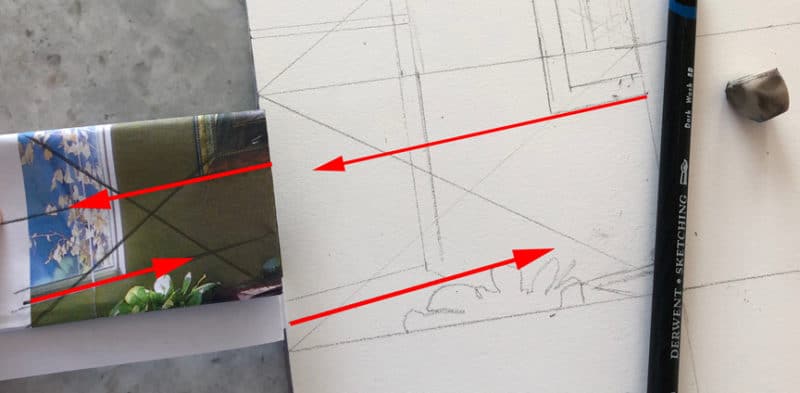
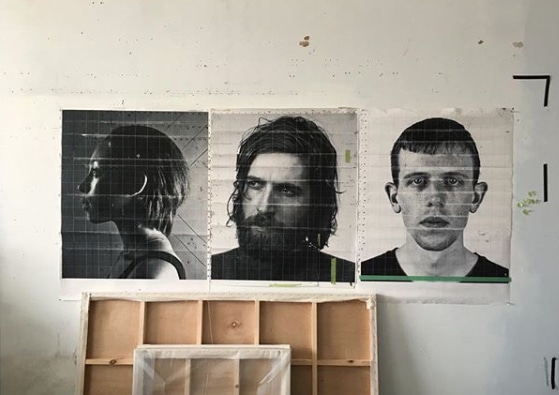
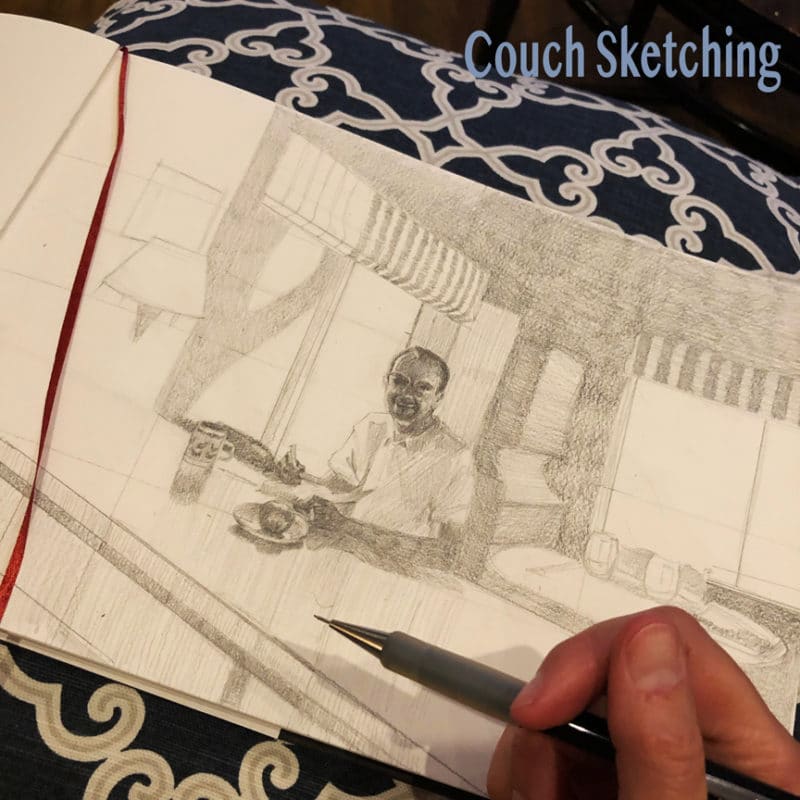
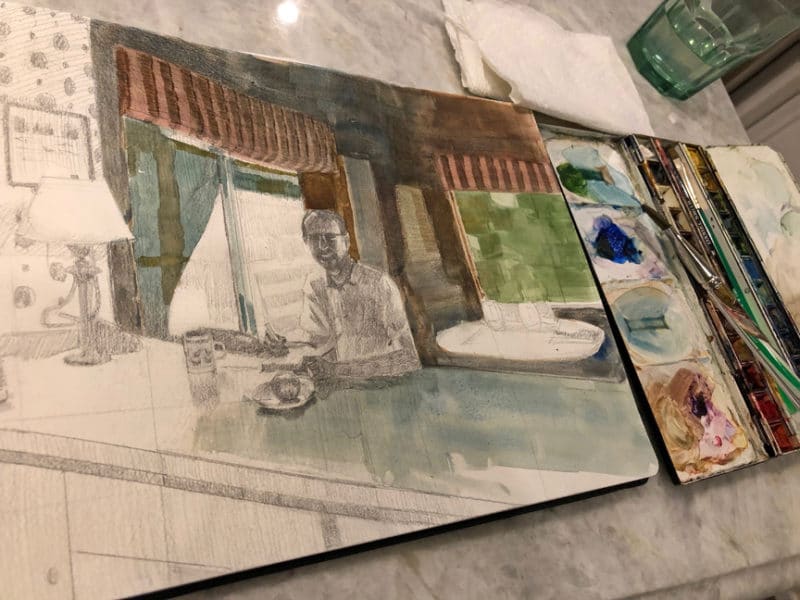
Let’s Get Your Inspiration Started
- Robert Kondo is an artist, animator, director (his animated short, The Dam Keeper was an Oscar nominee) and instructor at Schoolism. This six minute video demo painting (digital) of the sink in his studio is a beautiful example of block-in and shape-layout. He follows flat blocks of color with incremental layers of refinement. You can do this exercise too, with a pencil. Set up a still life with bright light and shadow, and deploy the same whittling down – from blocking the essence with shapes, to adjusting angles with an eraser, all the way through to adding cup handles near the end.
Don’t Be Overwhelmed
- If the notion that 10,000 hours is a requirement to learn a skill leaves you quaking in the corner, read this article by Josh Kaufman. How does 20 hours sound, instead? Everyone is busy, so the idea that getting good at art-making will take four years in college, and drawing every single day, and painting during lunch hours, and sketching from the car in the pick-up line at school is a little daunting. Twenty hours can be carved into one hour sessions on Monday, Wednesday and Friday for two months, and bingo, you’ve done it. Baby steps.
The human brain is optimized to pick up new skills extremely quickly. If you persist and practice in an intelligent way, you’ll always experience dramatic improvements in a very short period of time. ~Josh Kaufman
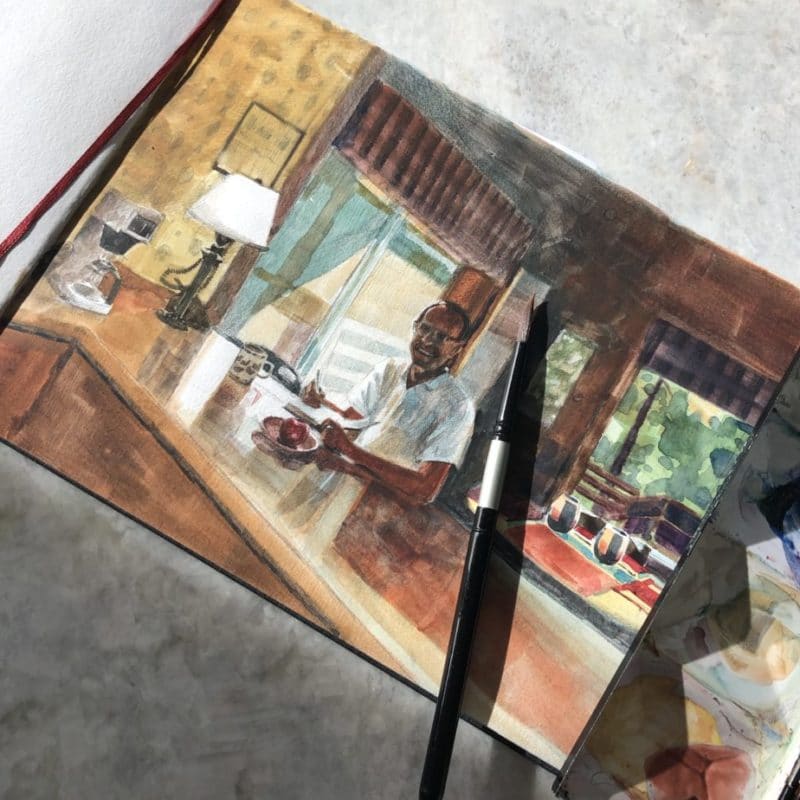
You’re in Good Grid Company
- Do you know the paintings and printmaking of Chuck Close? His giant (107″ x 83″) self portrait painted with Mars Black Acrylic in 1968 was done using a grid. Most of his subsequent work utilizes a grid too – but he’s taken it beyond the utility of accurate drawing and painting, and suffused it with his own creative and brilliant interpretation. Have a look at a few of his paintings and printmaking in this article.
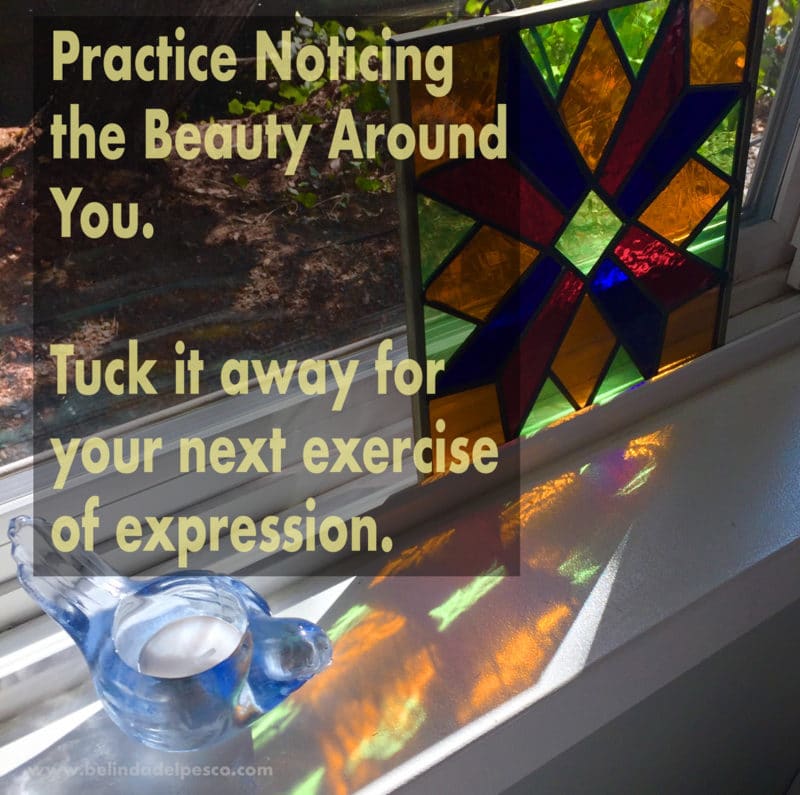
Here’s to Us
I’m so ready to start the climb into this season of art-making! I’ve been sorting through scans of watercolor studies. Some were painted many times over the course of a decade. It’s interesting to see the same scene rendered again and again as a sketch, a drawing, a watercolor (or three) and a linocut.
A chronological line up of older art will reveal improvements in drawing and painting skills over time – something we don’t often see on a day to day basis, so there’s that. And the repeated scenes are a record of sorts; revealing what was precious then, and what’s drawing us to paint now.
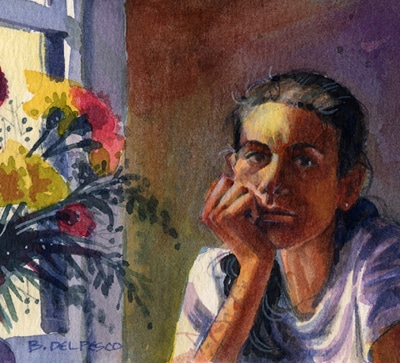
Plan Your Work, and Work Your Plan
The urge to paint a particular scene is mercurial and mysterious; what moved us a decade ago might be a struggle to get excited about now. Is that an indication of growth? Are we getting better at honing skills to select more impactful subjects and compositions? Or is it a reflection of this chapter of life, and the fickle nature of meandering emotional responses? I’m not sure, but right now, I feel a strong tug to paint small watercolor studies – like the one in this post. How about you?
I think sketching and painting compositions that challenge my skill set would be a good theme this year. A plan is always exciting to think about – sorting thumbnails and notes and images. Are you doing this too?
I plan to pursue artistic growth in 2019 like a earnest bounty hunter. How about you?
Let’s link arms, and jump in fully. Cowabunga!
Thanks for visiting, and I’ll see you in the next post,
Belinda
P.S. You can subscribe to get every new post as an email. Its free. Sign up here.
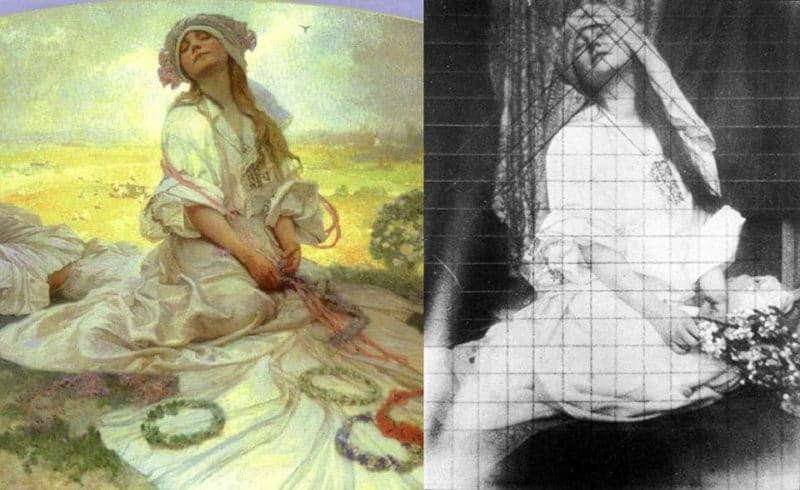
Art Quote
We can change. People say we can’t, but we do when the stakes or the pain is high enough. And when we do, life can change. It offers more of itself when we agree to give up our busyness.
Anne Lamott
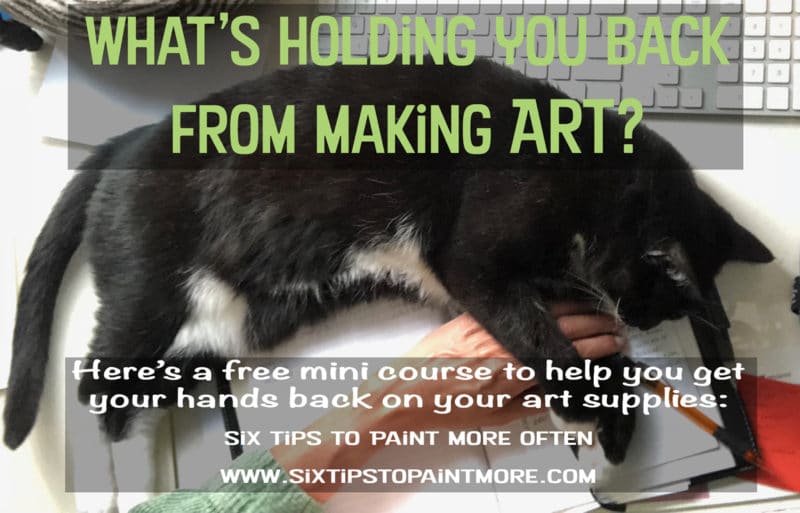

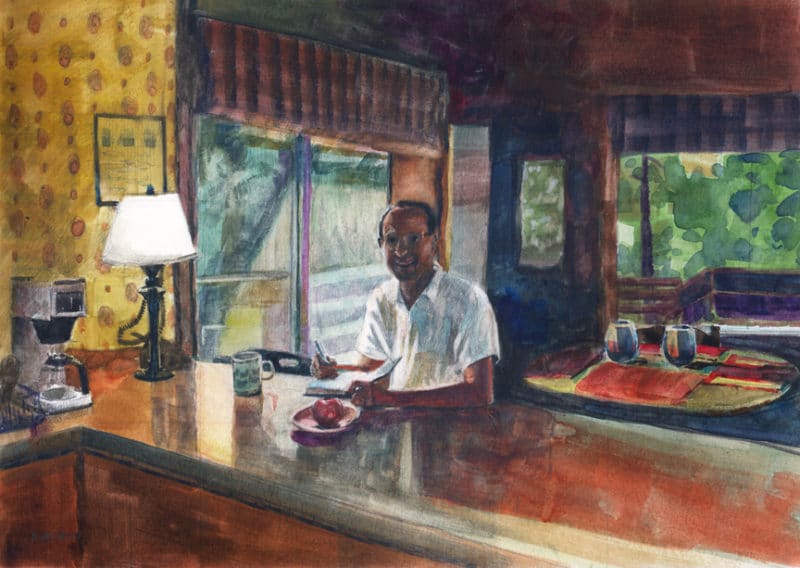
Happy New Year Miss DelPesco! Another great inspiring post from you for all of us and I’m right with you. Clean the art desk, organize those piles of ‘to start’ and ‘to finish’ and lets get on with the year, shall we?? See you and your art there!! xx
ps I loosely use the grid method — I rub soft pencil on the back of a copy of an image I want to paint, then put it over H2O paper and trace the basics. The rest I draw in following the grid and also making my own edits.
My dear Ms Grubinger, I heartily concur that a thorough studio clean up, and return to a sensible routine is in order! I am high-fiving you (from the bottom step) on that one. And bravo, with a bowl of raspberries, on your clever mash up of trace, sketch and grid to get your drawings on the watercolor paper. Amen to Resourcefulness!
Great post and links, Belinda. Really inspired me to get back into my routine! Thank you!
Hi Susan, Happy New Starts, and Long-Trail-Hike into your creative routine!